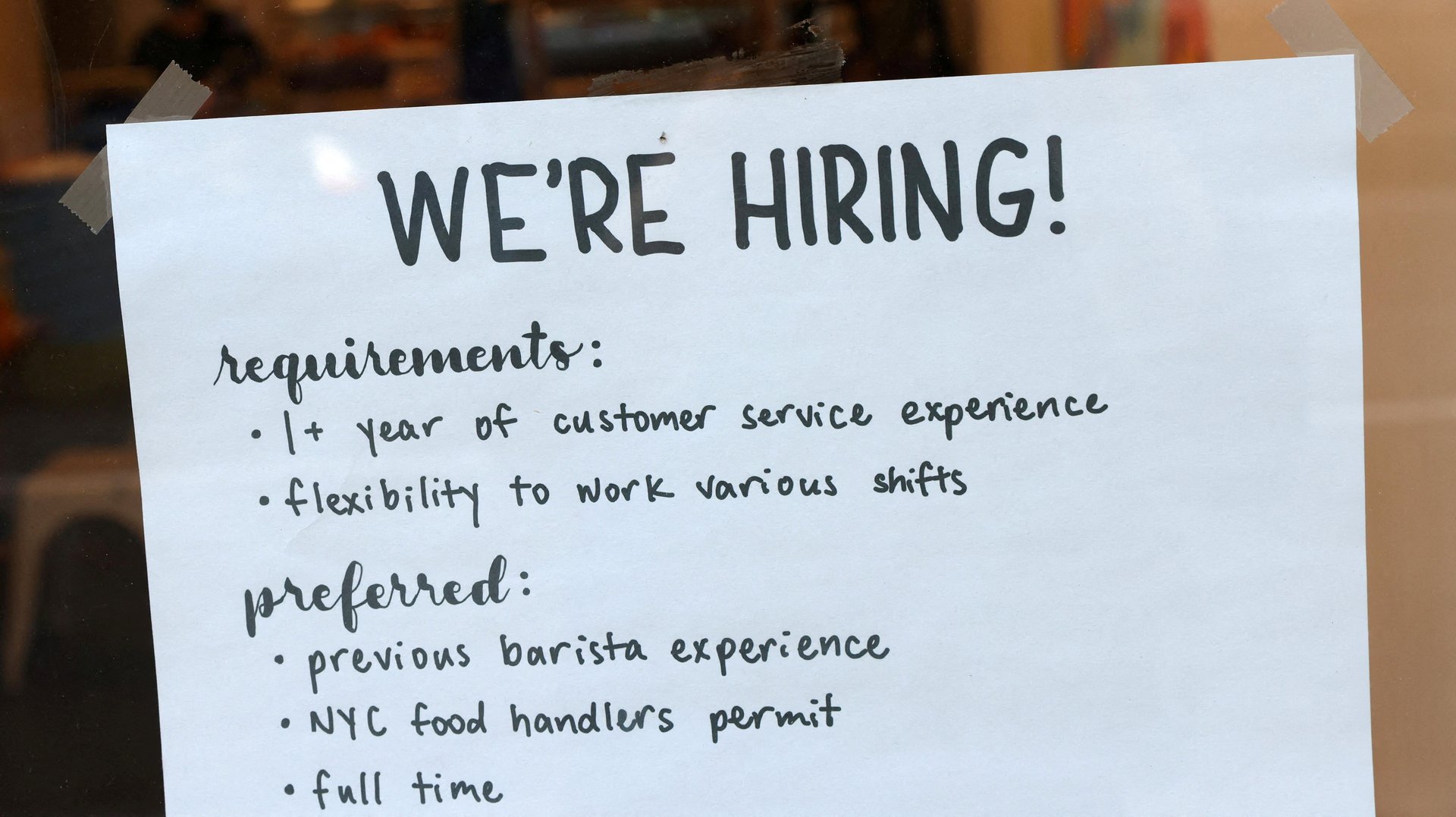It's still very much a worker's job market
Job postings on Indeed are still far above pre-pandemic levels, and workers want higher pay.

The number of job openings may be dropping, but US workers still have the upper hand.
On August 19, the number of job postings on Indeed.com dropped by nearly 6% from four weeks before, but they were still about 50% above pre-pandemic levels, according to a new report from the jobs site. New job postings were up more than 60% from March 2020 levels, indicating strong employer demand for workers.
Indeed’s data precedes the Job Openings and Labor Turnover (JOLTs) report from the US Bureau of Labor Statistics, due today. Generally, both reports move in the same direction, so the BLS data should also show workers’ leverage over employers.
Still, the labor market could slacken in the near term if the US Federal Reserve continues tightening financial conditions aggressively, noted Indeed economist AnnElizabeth Konkel, in statement.
US workers demand higher wages
Workers are also getting more ambitious about their salary expectations, according to searches on Indeed. Searches for $15-an-hour jobs, which were the most common earlier in the pandemic, are now the least popular. Searches for jobs that pay $20 and $25 an hour, meanwhile, have continued to grow.
And these searches may not reflect most Americans’ asking salary either. Annualized, $25 an hour would be about $48,750, but a recent survey of 1,300 Americans from the New York Fed showed that, on average, workers want to earn at least $73,000 a year, up 6% from a year ago.
US jobs report is expected to be strong in August
The US is also reporting job growth on Friday, part of a slew of indicators Fed officials will pore over to decide whether to continue hikes of 75 basis points or slow down to 50 basis point hikes next month. Most economists expect the economy to have added 300,000 jobs in August.
After July’s unexpectedly strong jobs report—which showed the economy added 528,000 jobs—the Fed will be sensitive to the labor market overheating, said economists at investment bank Credit Suisse.
“A moderating pace of job gains and stabilization in the unemployment rate should allow the Fed to slow its pace of hiking to 50bps, but the risks are skewed to a more-hawkish response if data surprise on the upside,” the economists wrote.
